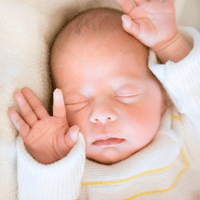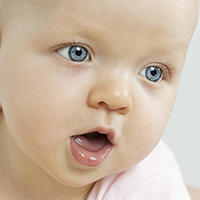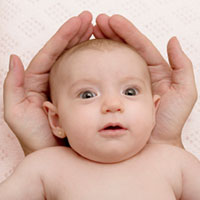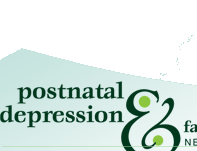 |

Baby States
To read the Introducton to Babys Click Here
The following is a guideline to the different states that babies can be in.
Babies behave in certain ways in each state. By recognising what state your baby is in it is easier to work out what to do with them.
 This can make being with them feel like less work and more fun. This can make being with them feel like less work and more fun.
There are two sleep states:
- Quiet asleep
- Active asleep
Three awake states:
- Quiet Alert
- Active Alert
- Crying
And one in between state:
- Drowsy (falling asleep or waking)
Quiet sleep
|
What baby does
|
|
What you can do
|
|
Lies still.
|
 |
Baby is hard to wake up. No face or eye movements. This is not a good time to feed.
|
|
Smooth, regular breathing, generally unresponsive. May twitch, occasionally startles.
|
Good time for the carer to take a rest or if you want to do something a bit noisy, baby will probably stay asleep.
|
Active sleep
|
What baby does
|
|
What you can do
|
|
More body activity. Irregular breathing. Movements of face - may smile. Eyes move under lids. More responsive. More likely to wake up.
|
 |
Don’t rush to interact with your baby, they may go back to sleep. Best not to feed your baby in this state. Fussy/crying sound does not mean your baby is hungry. Wait until your baby is fully awake to feed or do anything very active with them.
|
Drowsy
|
What baby does
|
|
What you can do
|
|
Smooth body movements. Mild startles.
|
 |
This state comes before waking. As your eyes may open and close baby’s eyes may open and close. You may think they are awake.
|
|
They are heavy lidded, dull and glazed. They may have facial movements.
|
Wait and see if they will wake or stay asleep.
To wake your baby give them something to see, hear or suck.
|
Quiet alert
|
What baby does
|
|
What you can do
|
|
Minimal body activity. Regular respirations. Face has a bright shiny look.
|
 |
Good time to feed, talk, look at, or hold your baby.
|
|
Eyes are wide and bright. Most attentive to stimuli. Will focus on voice, face or moving objects.
|
Baby will learn and respond best in this state. Giving your baby something to see, hear or suck will keep your baby in an alert state.
|
|
Baby may look away indicating that they need a break or a rest.
|
When put down to rest the key is to go slowly and follow a sequence that your baby can learn. This will allow for your baby’s need for rest
|
Active alert
|
What baby does
|
|
What you can do
|
|
Much body movement.
|
 |
Baby needs a change of pace.
|
|
May fuss. Eyes open – less bright.
|
Try feeding if it is time for your baby to feed. Try giving your baby something to suck on like hands.
|
|
More sensitive to noise and being hungry.
|
You may need to slow down or stop what you are doing with your baby.
|
Crying
|
What baby does
|
|
What you can do
|
|
Cry, grimace, move a lot
|
 |
Crying tells you your baby has had enough. You need to stop whatever you are doing. You may need to help soothe your baby. Doing one soothing action like rocking, over and over, works best. Singing calmly or quietly repeating sounds or words may reassure them.
|

|
 |




 This can make being with them feel like less work and more fun.
This can make being with them feel like less work and more fun.







